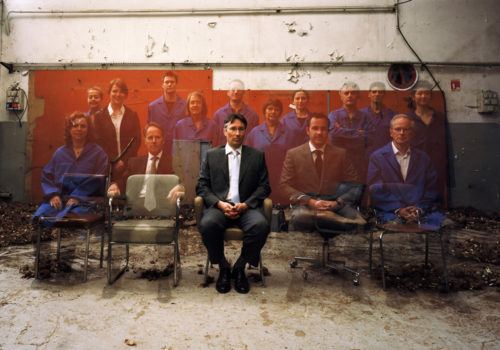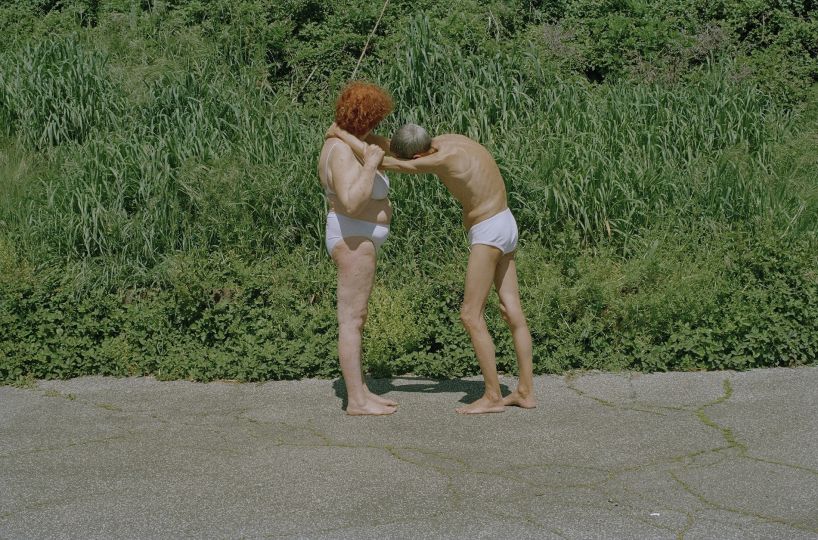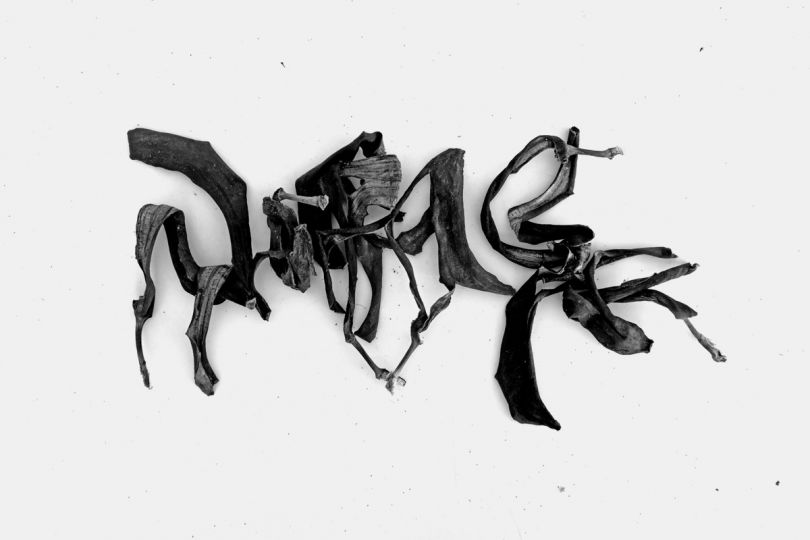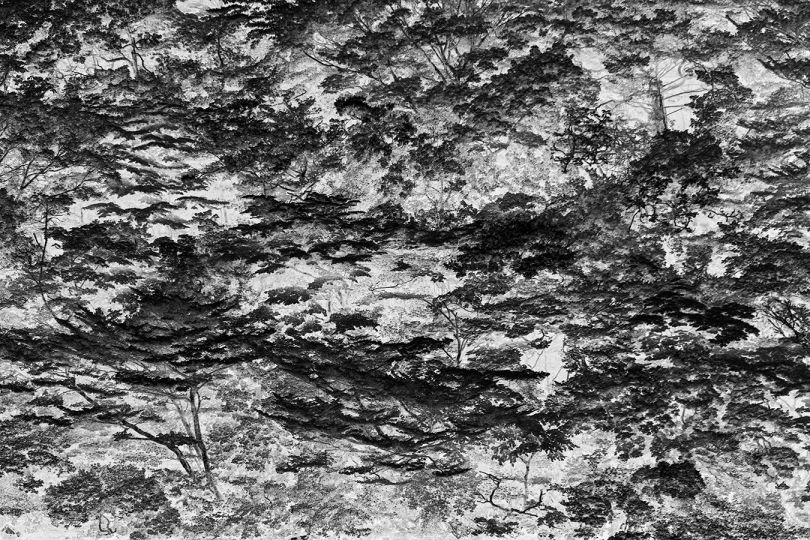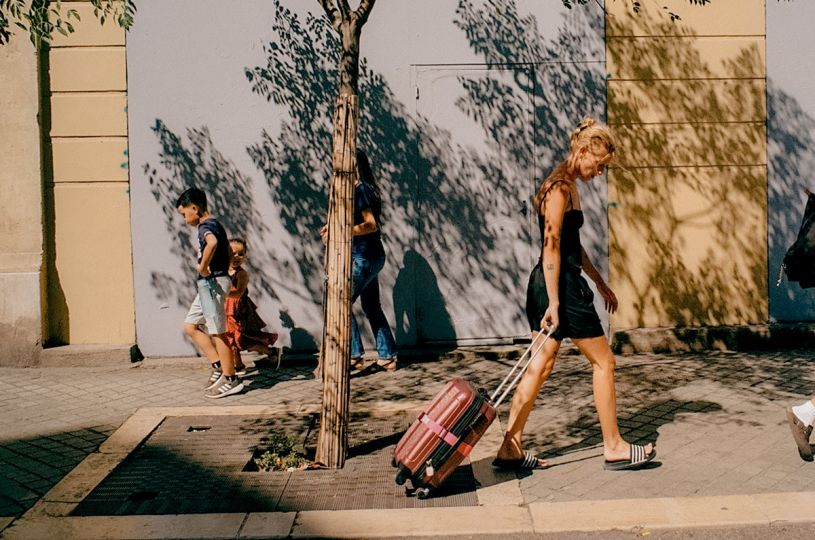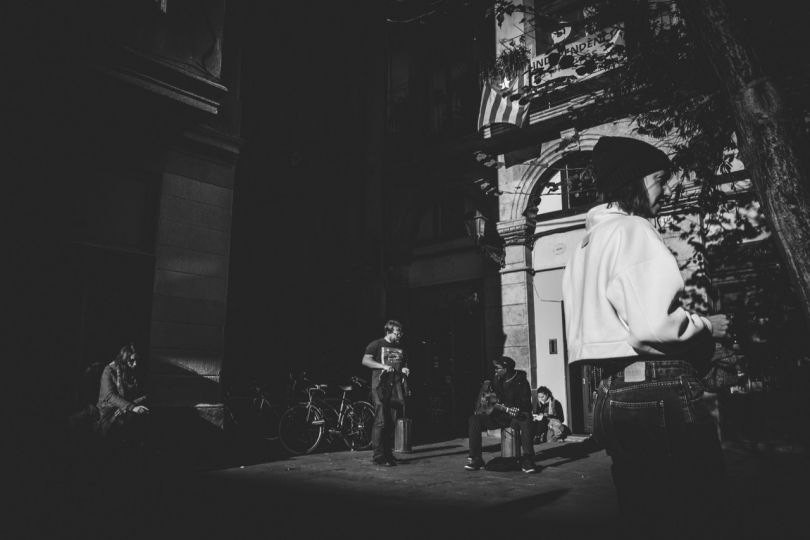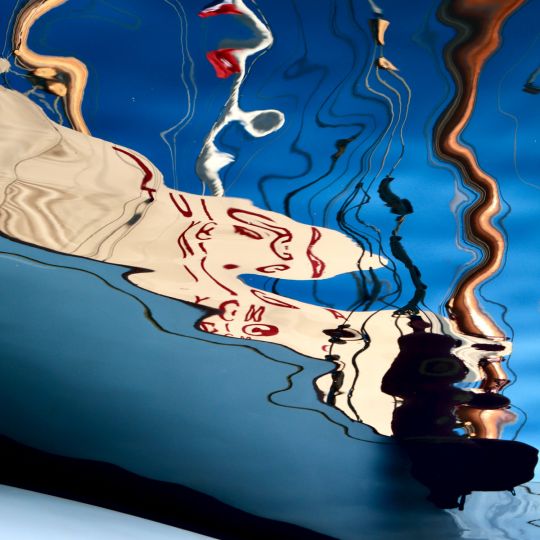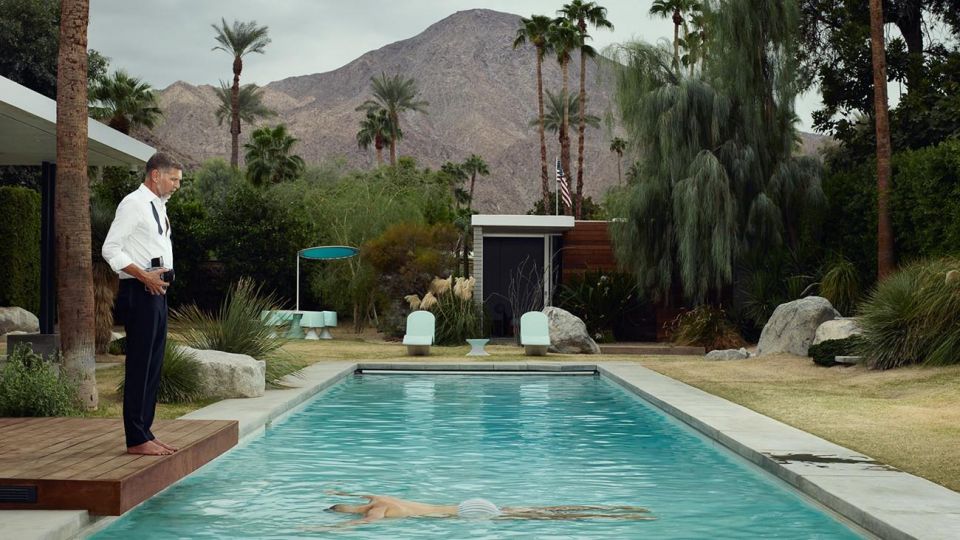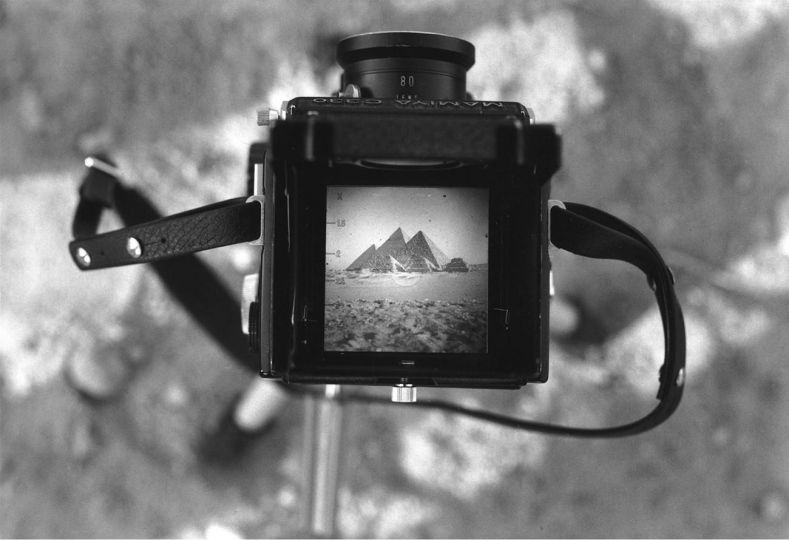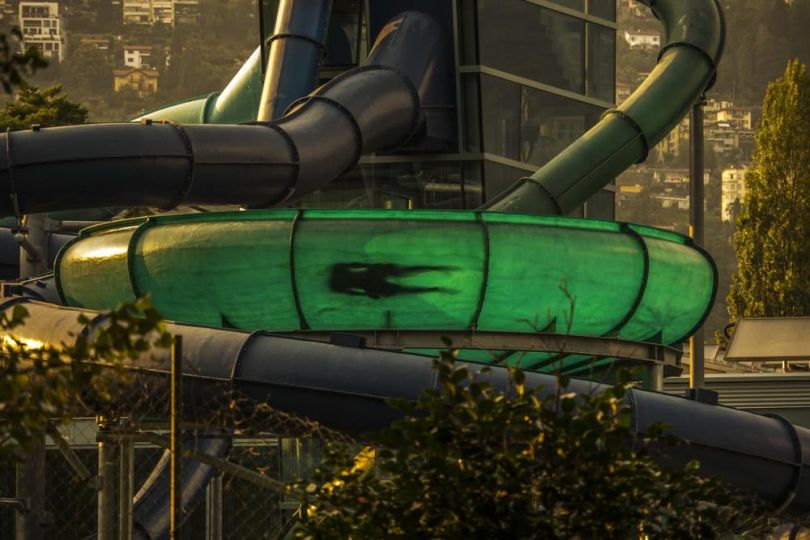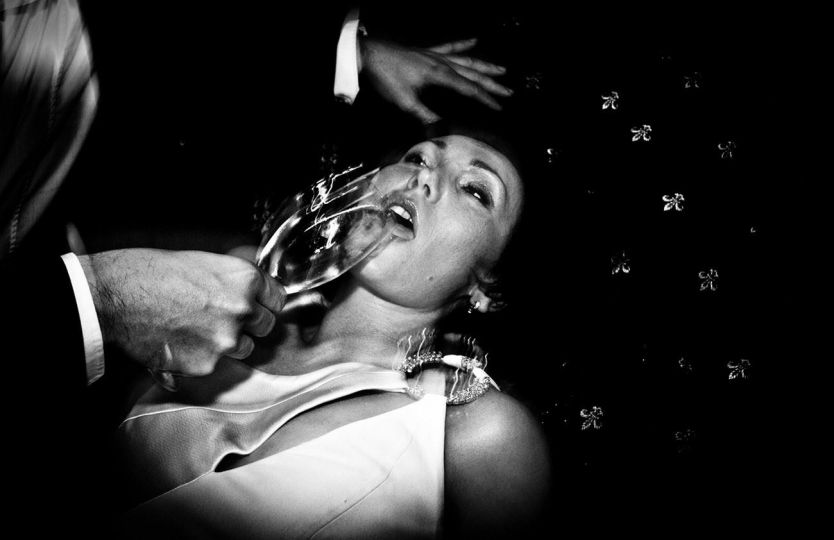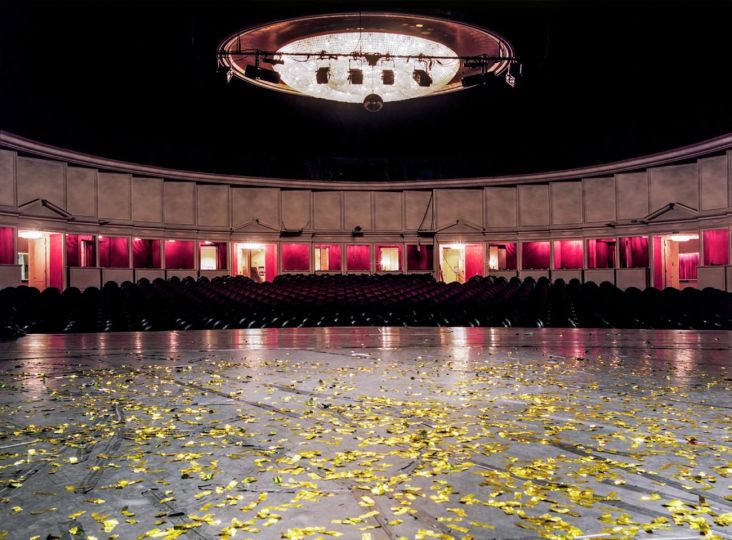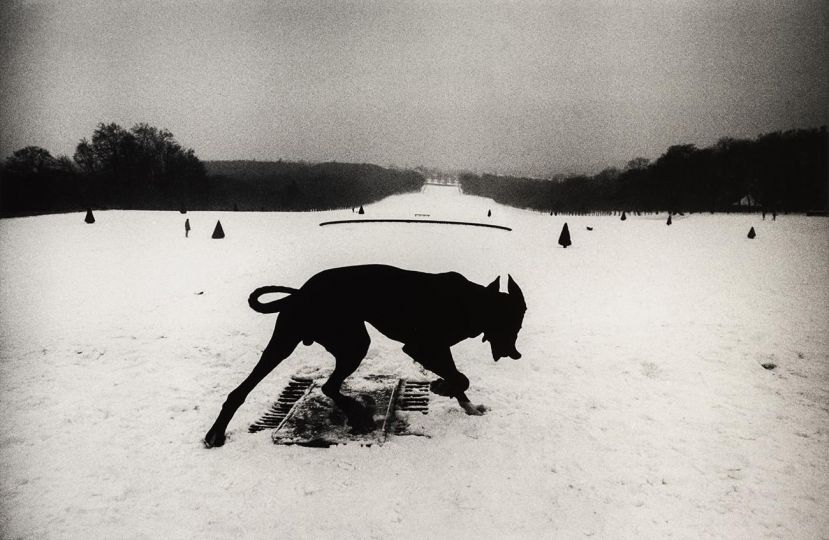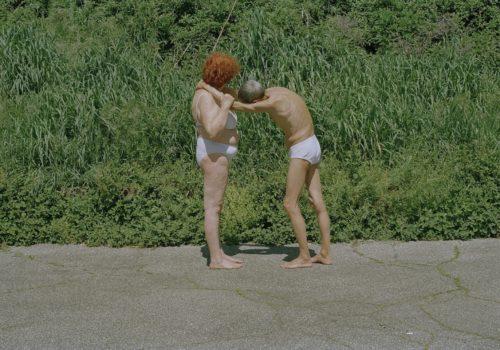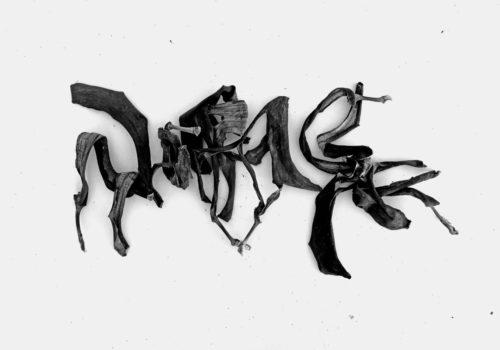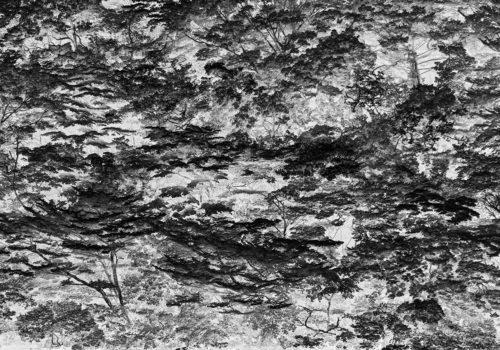Estelle Lagarde’s œuvre has a fictional core. Ever since 1996, when she debuted as a photographer, mise-en-scène has been her raw material. She departs from reality to take us into a realm of dreams, of the absurd, and the incongruous. From Dame des Songes to Contes Sauvages, from Hôpital to Maison d’Arrêt, to L’Auberge, she has observed and experienced the world around her through the prism of the strange and the dreamlike. Her world is also ours.
Estelle Lagarde plays with time and light. Using rather long exposures, the artist’s technique generates surreal lighting effects, enveloping the characters in a mysterious and fragile aura. All photographs are shot with a large-format camera and developed using gelatin silver process. The encounter with a given place is the tangible factor that triggers visual construction and a plunge into fiction, and, in return, may call reality into question. Estelle Lagarde looks with a photographer’s and architect’s eye : she locates buildings in the process of being dismantled, renovated, or repurposed and comes up with new ideas for mises-en-scène.
The series Lundi matin started with the discovery of a derelict car repair shop. Once a site no doubt teeming with activity, it was left abandoned, only to be frequented by taggers and graffiti artists, its floor gradually covered with decomposing vegetation. This is the theatre where Estelle Lagarde chose to confront, in her own way, the ongoing economic crisis, the threat of unemployment, harassment, and depression in the world of business.
The narrative of a workweek ties the images together. Each image is a symbolic, but humane, reference to the suffering faced by our society as a whole, and its everyday consequences and even the most banal experiences of pain. We must take one day at a time… and so with each image, one word at a time, which, put together, may sound like a broken record: “employment,” “solidarity,” “resignation,” “confinement,” “strike,” “solitude,” “laying off.”
We are invited into the realm of the uncanny and the absurd, where, not without distance or humor, the photographer gives us the choice of looking deeper into things or being entertained, or both at the same time. While the mise-en-scène is her primary source of pleasure, as in her previous series, the artist’s intention is neither to elicit nor to discourage serious questions about the world, its disharmony, and about where it’s heading. She plays on the “clichés” of the economic crisis and class struggle. She appropriates them, not at all in a jaded or condescending way, but by infusing them with ambiguity and the poetry of the absurd.
Estelle Lagarde offers us a vision but makes no human, social, or philosophical claims. Fusing surrealism and theatricality, the artist explores the notion of space, the figure of its occupant, and the relationship between the two. The backdrops in Estelle Lagarde’s images, such as rubble and crumbling walls, represent the disorder and decay we often don’t see or refuse to see around us, and which we often pass without even realizing it. She turns everything into child’s play, and toys with reality as much as with dreams. We, too, turned into ghosts who pass through her images.
The light that bathes Estelle Lagarde’s photographs seems to shine through the human figures and project their history, their present fragility, and heir evanescence. They leave behind a visual trace that oscillates between dream and reality. Estelle Legarde explores images and photographic representation even while she plays with reality and with theatricality. She takes a serious subject and makes it beautiful and fun. We can respond in one of two ways: discharge our anxiety or find a release in laughter. One will often be mixed with the other.
Olivier Bourgoin
Olivier Bourgoin is a writer specializing in photography and founder of the Agence Révélateur.
Estelle Lagarde, Lundi matin
March 3–25, 2017
Radial Art Contemporain
11b, Quai de Turckheim
67000 Strasbourg
France
http://www.radial-gallery.eu/

